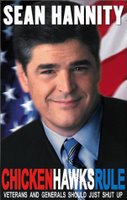DC Comics Resurrects Batwoman As Lesbian
Wednesday May 31, 2006 10:01 PM
By LARRY McSHANE
Associated Press Writer
NEW YORK (AP) - Years after she first emerged from the Batcave, Batwoman is coming out of the closet. DC Comics is resurrecting the classic comic book character as a lesbian, unveiling the new Batwoman in July as part of an ongoing weekly series that began this year.
The 5-foot-10 superhero comes with flowing red hair, knee-high red boots with spiked heels, and a form-fitting black outfit.
``We decided to give her a different point of view,'' explained Dan DiDio, vice president and executive editor at DC. ``We wanted to make her a more unique personality than others in the Bat-family. That's one of the reasons we went in this direction.''
The original Batwoman was started in 1956, and killed off in 1979. The new character will share the same name as her original alter ego, Kathy Kane. And the new Batwoman arrives with ties to others in the Gotham City world.
``She's a socialite from Gotham high society,'' DiDio said. ``She has some past connection with Bruce Wayne. And she's also had a past love affair with one of our lead characters, Renee Montoya.''
Montoya, in the ``52'' comic book series, is a former police detective. Wayne, of course, is Batman's true identity - but he has disappeared, along with Superman and Wonder Woman, leaving Gotham a more dangerous place.
The ``52'' series is a collaboration of four acclaimed writers, with one episode per week for one year. The comics will introduce other diverse characters as the story plays out.
``This is not just about having a gay character,'' DiDio said. ``We're trying for overall diversity in the DC universe. We have strong African-American, Hispanic and Asian characters. We're trying to get a better cross-section of our readership and the world.''
The outing of Batwoman created a furor of opinions on Web sites devoted to DC Comics. Opinions ranged from outrage to approval. Others took a more tongue-in-cheeck approach to the announcement.
``Wouldn't ugly people as heroes be more groundbreaking?'' asked one poster. ``You know, 200-pound woman, man with horseshoe hair loss pattern, people with cold sores, etc.?''
DiDio asked that people wait until the new Batwoman's appearance in the series before they pass judgment.
``You know what? Judge us by the story and character we create,'' he said. ``We are confident that we are telling a great story with a strong, complex character.''
DiDio spent most of the morning fielding phone calls from media intrigued by the Batwoman reinvention.
``It's kind of weird,'' he said. ``We had a feeling it would attract some attention, but we're a little surprised it did this much.''
Re-Post from the myspace blog - Friday, May 05, 2006
Captain America Fugitive
Marvel's new series has your favourite superheroes fighting George Bush and the Patriot Act
Captain America is about to battle his most fearsome foe yet: The government of the United States.
Today, Marvel Comics is releasing the first in its miniseries Civil War, which can only be described as a gutsy comic-book series focusing on the whole debate over homeland security and tighter government controls in the name of public safety.
The seven-issue series once again puts superheroes right back in the thick of real-world news, just as DC Comics has Batman battling al-Qaeda in a soon-to-appear comic and Marvel's X-Men continue to explore themes of public intolerance and discrimination.
It also recalls the plotline during the Watergate years when Captain America's alterego, disillusioned by White House politics, stopped donning the patriotic costume.
But with Civil War, hero is pitted against hero in the choice of whether or not to side with the government, as issues ranging from a Guantanamo-like prison camp for superheroes, embedded reporters and the power of media all play in the mix.
The Fantastic Four's elastic Mr. Fantastic has already joined Iron Man to support Washington in earlier editions of Marvel comics leading into the Civil War series. Doctor Strange isn't taking Washington's side.
But what about Spider-Man, that hero of many counterculture kids? Will he side with the Man? Or will the rest of the Fantastic Four? (There's even a rumour that Marvel's Canadian hero Alpha Flight might get into the mix.)
Civil War starts with a clever premise. A number of incidents involving Marvel's rough-and-ready heroes has turned the good guys into targets of U.S. lawmakers: There is, for instance, one accident where a group of novice superheroes gets in over its head, leading to the death of a schoolyard full of children.
The politicians are concerned about public safety. So Congress passes a bill forcing all superheroes to register with the government as human weapons of mass destruction, and to work, in effect, for Washington. Superheroes who don't comply will themselves be branded fugitives.
Washington insider Tony Stark, aka Iron Man, argues that siding with Washington is a way for the heroes to work with lawmakers, not against them, in this moment of trouble. Others see it as a way to gain recognition from the authorities, at long last, or even a way to get government funding to help fight the bad guys.
But other heroes aren't having any of it. In one comic leading up to the series, Doctor Strange gets hopping mad when he first hears about the bill (albeit in his debonair, "master of the mystic arts" kind of way). And Captain America, who couldn't be more all-American if he tried with that costume of his, finds himself leading the fugitive heroes.
In the first issue of Civil War, he brilliantly folds an entire dissertation on security into one succinct dialogue bubble by saying: "Don't play politics with me, lady. Superheroes need to stay above that stuff or Washington starts telling us who the supervillains are."
But Marvel says it isn't trying to take one side or the other.
"We need to present both sides' arguments, both sides of the coin, as fairly and as accurately as possible, and really let the readers make their own decision," said editor-in-chief Joe Quesada. "Marvel readers come in all shapes and sizes, and we speak to so many different people, different demographics. It's unfair for us to make this our bully pulpit and sit there and say, 'This bad. That good.'."
The series is also far removed from the era when DC Comics' Superman, Batman and Wonder Woman were punching out the Nazis or Japanese during the Second World War.
In Civil War, there is no Iraq war, although George W. Bush is the president in the series. The story, though, focuses on the central issue of public security versus personal freedoms with two factions of superheroes battling among themselves on the question (with comic fanboys living vicariously through them).
But what does it say about us if Captain America and Iron Man start to occupy some readers' attention more than the latest real news?
"One of the best ways to broach these conversations and bring up this discussion is through entertainment and through characters that people are familiar with. And again, for us, it's communicating both sides of the argument," Quesada said.
In the end, one of the cleverest touches in Civil War may be a few panels, a momentary breather in the story, in which the giant figure of The Watcher stands silently in the corner of Doctor Strange's sanctum. As the Strange explains: "He only appears to record moments of great change and enormous upheaval. His presence now does not bode well."
Disturbingly, that could be how many of us feel, watching events unfold.

















































